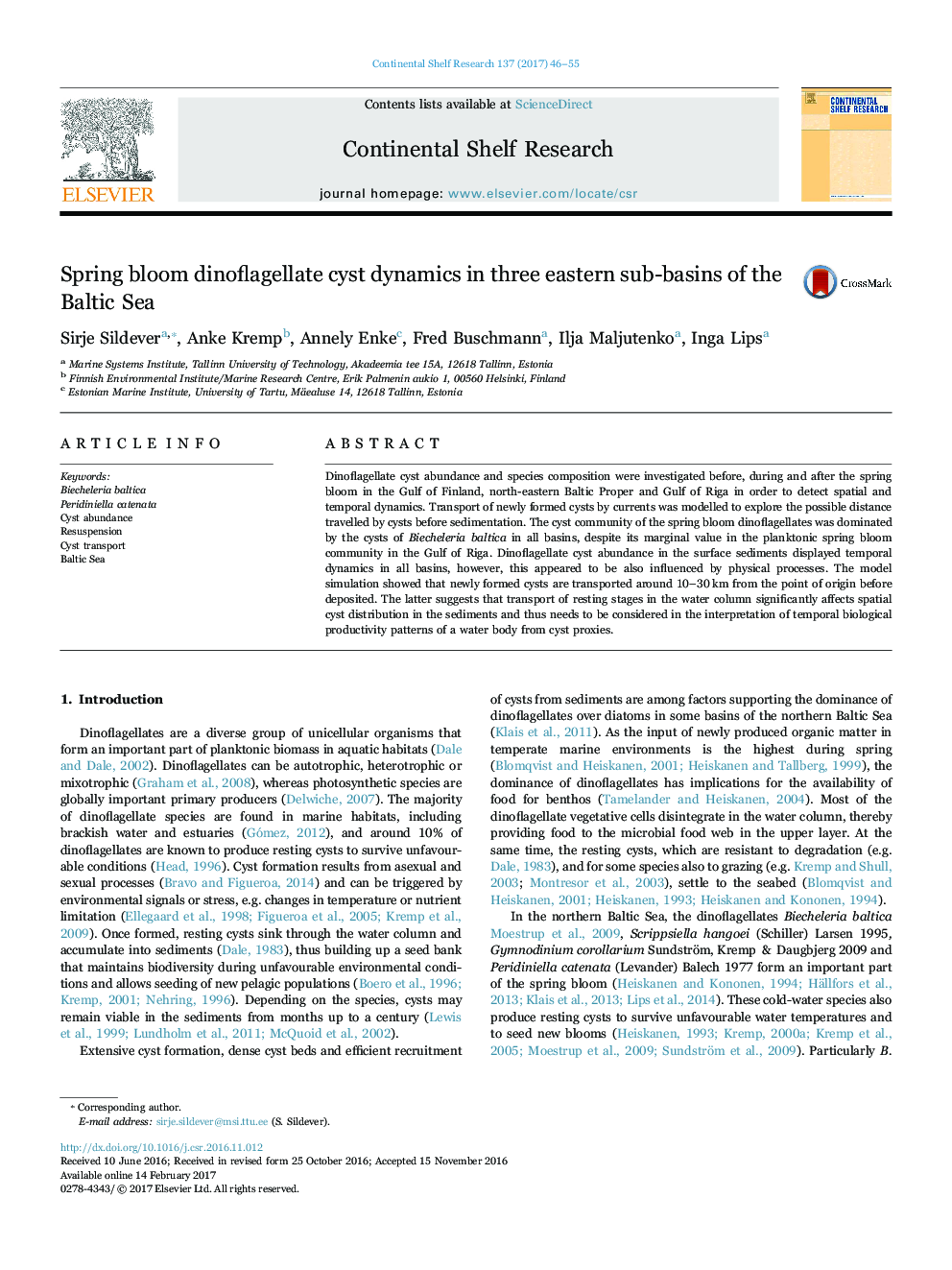| Article ID | Journal | Published Year | Pages | File Type |
|---|---|---|---|---|
| 5764583 | Continental Shelf Research | 2017 | 10 Pages |
Abstract
Dinoflagellate cyst abundance and species composition were investigated before, during and after the spring bloom in the Gulf of Finland, north-eastern Baltic Proper and Gulf of Riga in order to detect spatial and temporal dynamics. Transport of newly formed cysts by currents was modelled to explore the possible distance travelled by cysts before sedimentation. The cyst community of the spring bloom dinoflagellates was dominated by the cysts of Biecheleria baltica in all basins, despite its marginal value in the planktonic spring bloom community in the Gulf of Riga. Dinoflagellate cyst abundance in the surface sediments displayed temporal dynamics in all basins, however, this appeared to be also influenced by physical processes. The model simulation showed that newly formed cysts are transported around 10-30Â km from the point of origin before deposited. The latter suggests that transport of resting stages in the water column significantly affects spatial cyst distribution in the sediments and thus needs to be considered in the interpretation of temporal biological productivity patterns of a water body from cyst proxies.
Keywords
Related Topics
Physical Sciences and Engineering
Earth and Planetary Sciences
Geology
Authors
Sirje Sildever, Anke Kremp, Annely Enke, Fred Buschmann, Ilja Maljutenko, Inga Lips,
